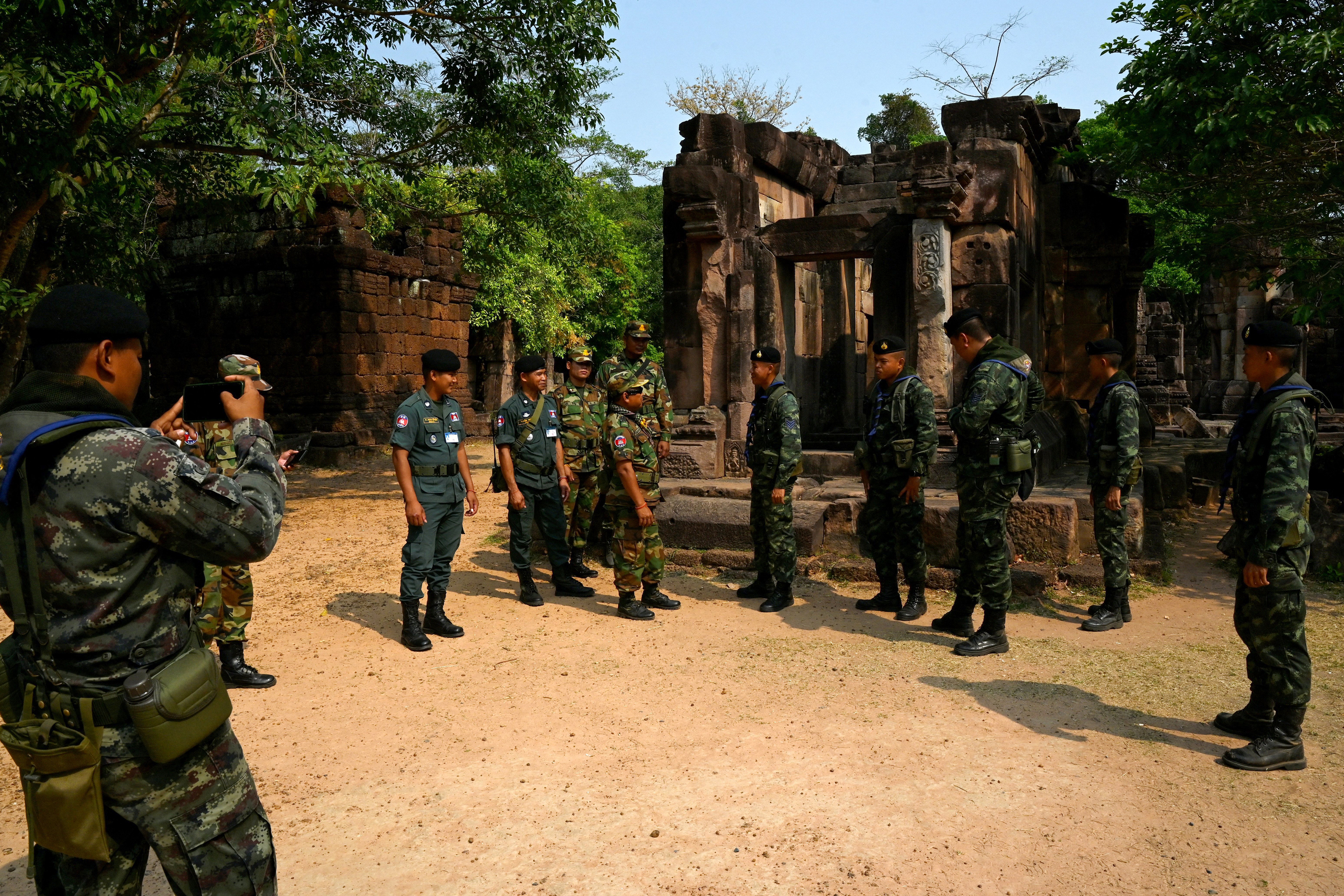 |
Smoke rises from a convenience store near a gas station in Kantharalak district, Sisaket province, Thailand, after being hit by Cambodian rocket fire on 24/7, killing two students. (Reuters) |
Cambodian and Thai soldiers faced off at the ancient Ta Moan Thom temple in the disputed area on 26/3, at a time when tensions between the two countries were simmering over undefined border areas, particularly temples dating back to the Khmer Empire. Ta Moan Thom, known as Ta Muen Thom in Thai, is located in Cambodia, but part of the entrance is currently controlled by Thailand.
Both sides increased their military presence in the disputed areas following a shooting incident in May that killed a Cambodian soldier, as well as landmine incidents that injured at least two Thai soldiers.
On 24/7, Ta Moan Thom became a flashpoint when soldiers from both sides accused each other of firing the first shots in the area.
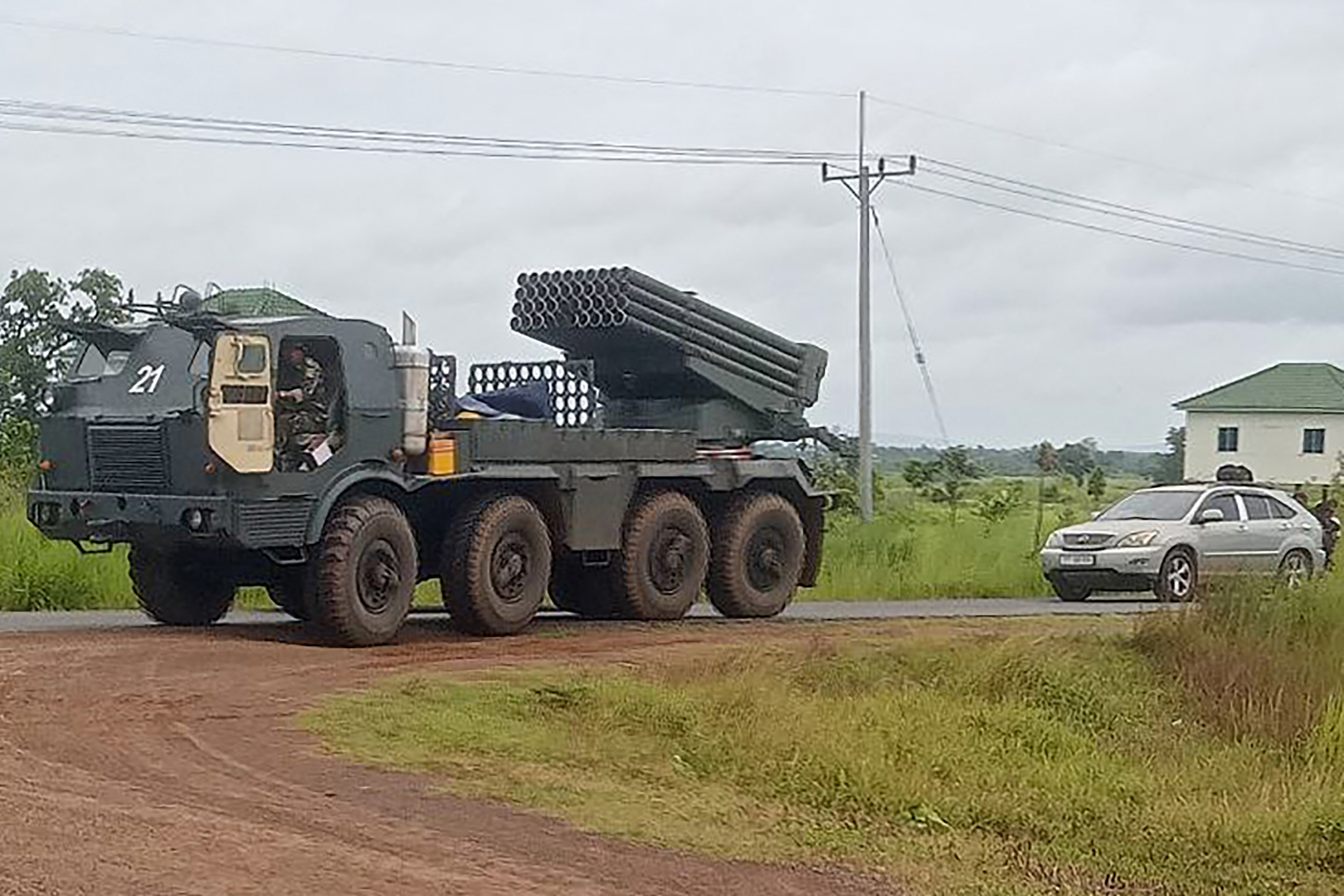 |
A Thai drone strikes a target in Cambodia in a video posted on the afternoon of 24/7. (Royal Thai Army) |
The clashes at Ta Moan Thom quickly escalated and spread to other areas along the border. Both armies deployed heavy weapons to the border and fired at targets across the frontier. This image shows a Cambodian BM-21 multiple rocket launcher system near the border with Thailand. The Thai military accused Cambodian forces of firing BM-21 rockets at villages near the border, killing civilians.
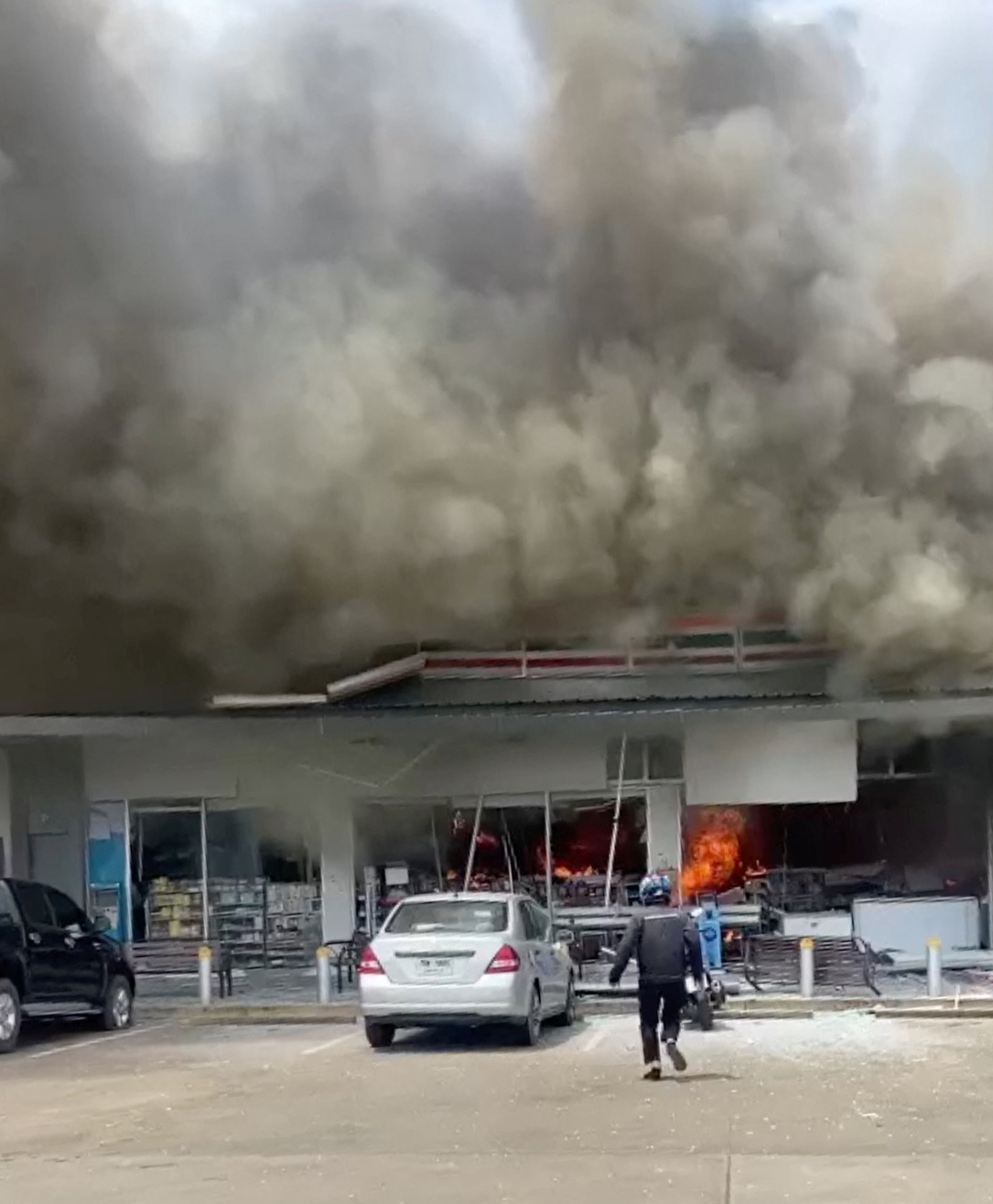 |
Smoke rises from a convenience store near a gas station in Kantharalak district, Sisaket province, Thailand, after being hit by Cambodian rocket fire on 24/7, killing two students. (Reuters)
 |
The aftermath of the shelling at the convenience store in Sisaket province. The Thai military deployed F-16 fighter jets to bomb the bases of two Cambodian army divisions across the border, while also intensifying their hunt for BM-21 rocket launchers. They also used heavy artillery, tanks, and drones to attack targets across the border.
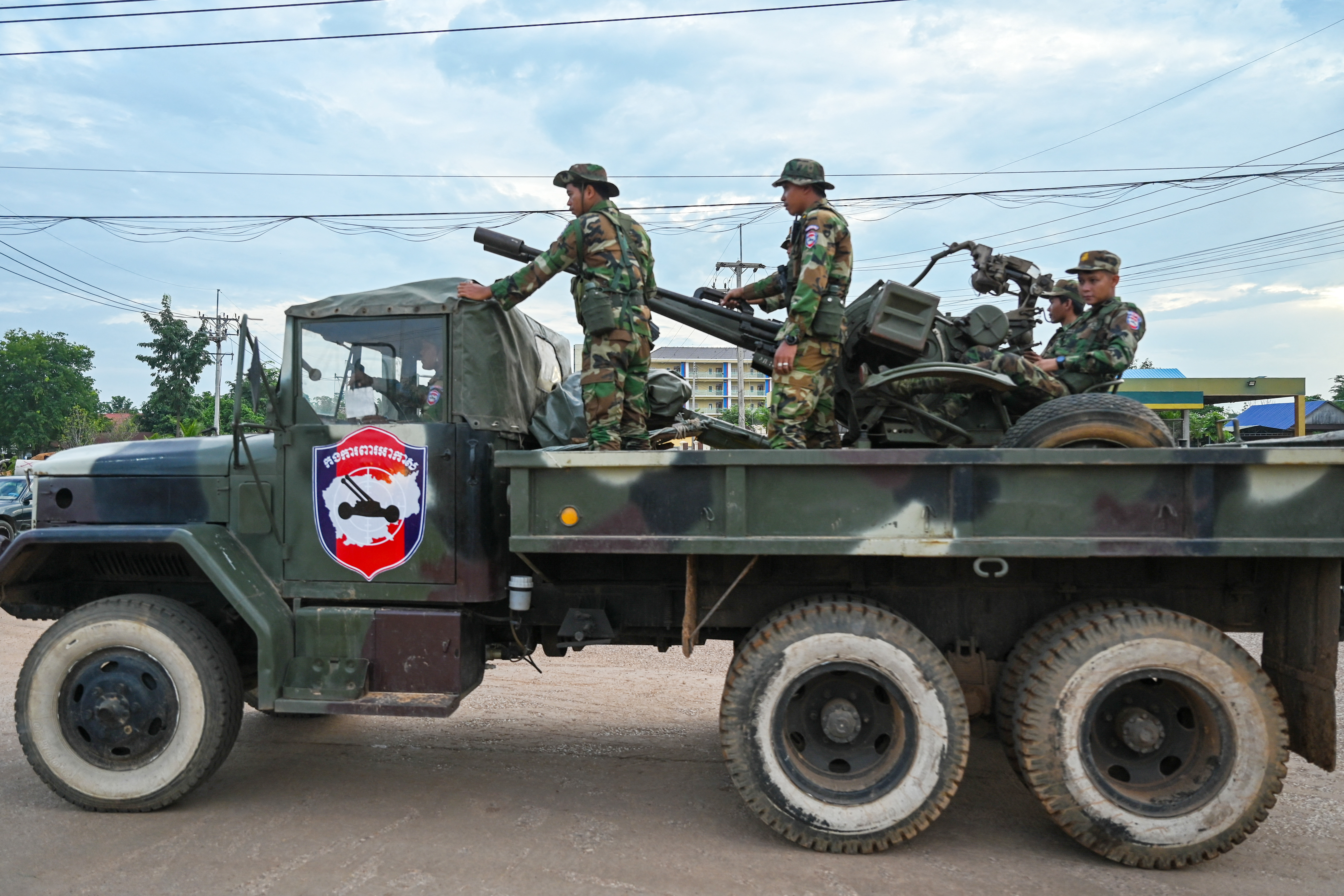 |
A truck carrying a Cambodian air defense system in Oddar Meanchey province on 25/7. On the second day of clashes, the two forces continued to exchange heavy artillery fire in the border areas. Acting Thai Prime Minister Phumtham Wechayachai warned that the clashes could escalate into war.
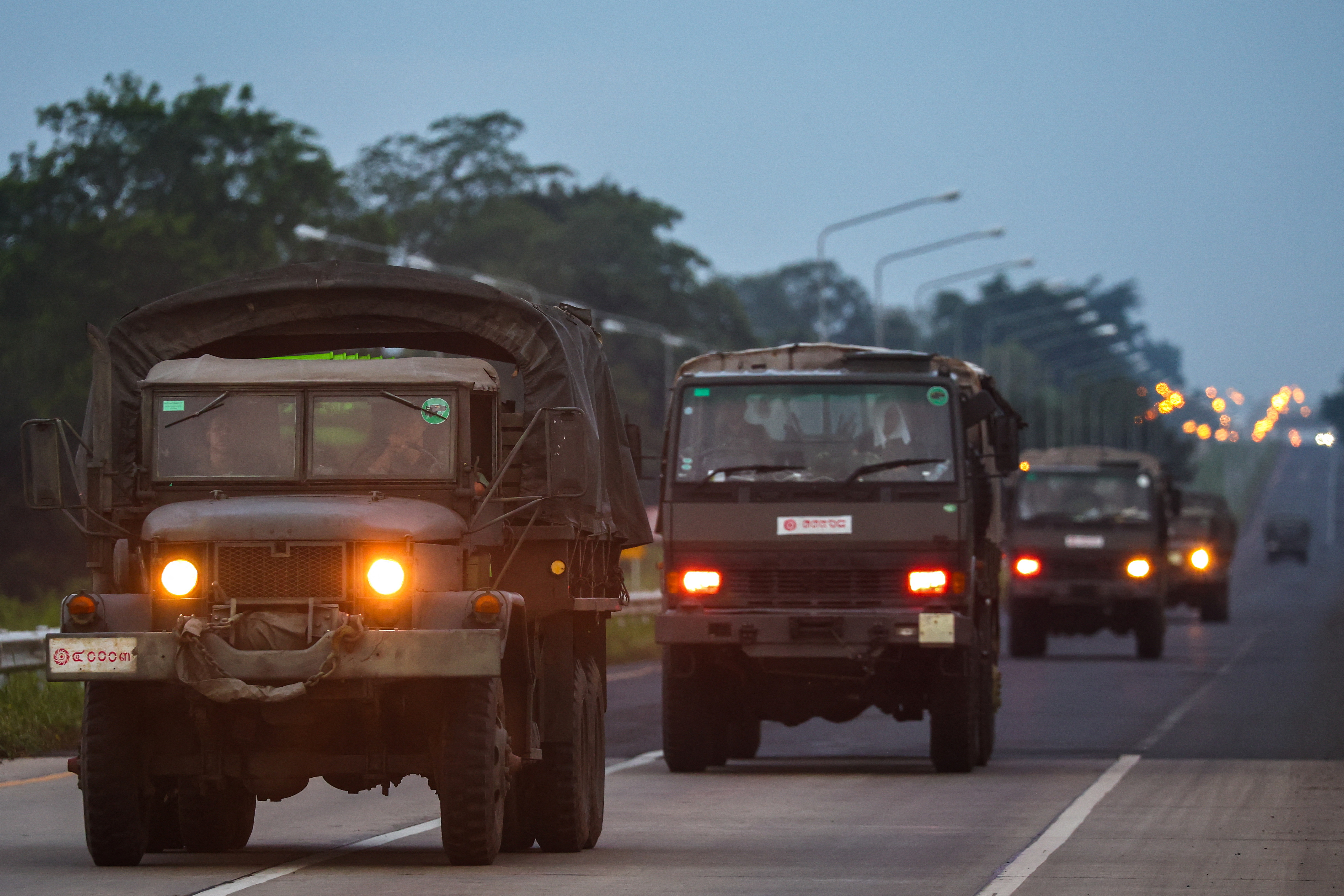 |
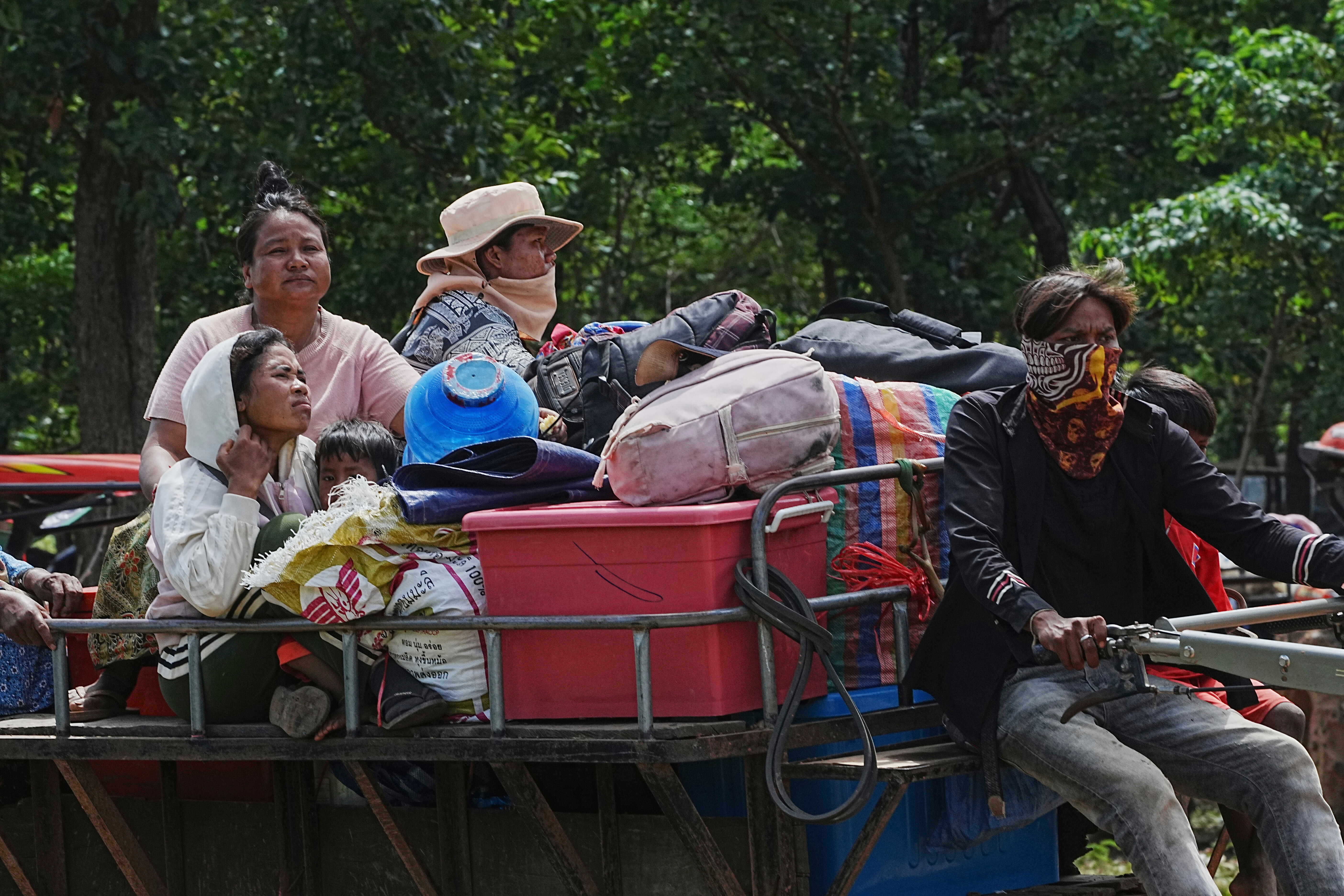 |
A military convoy moves along a road in Buriram province, Thailand, as Bangkok reinforces its forces in the border area. The US, China, and Malaysia, the current ASEAN chair, offered to facilitate dialogue to find a solution to the Cambodia-Thailand border conflict on 25/7.
However, the fighting continued to escalate as both sides deployed more troops and weapons to the border and intensified their attacks.
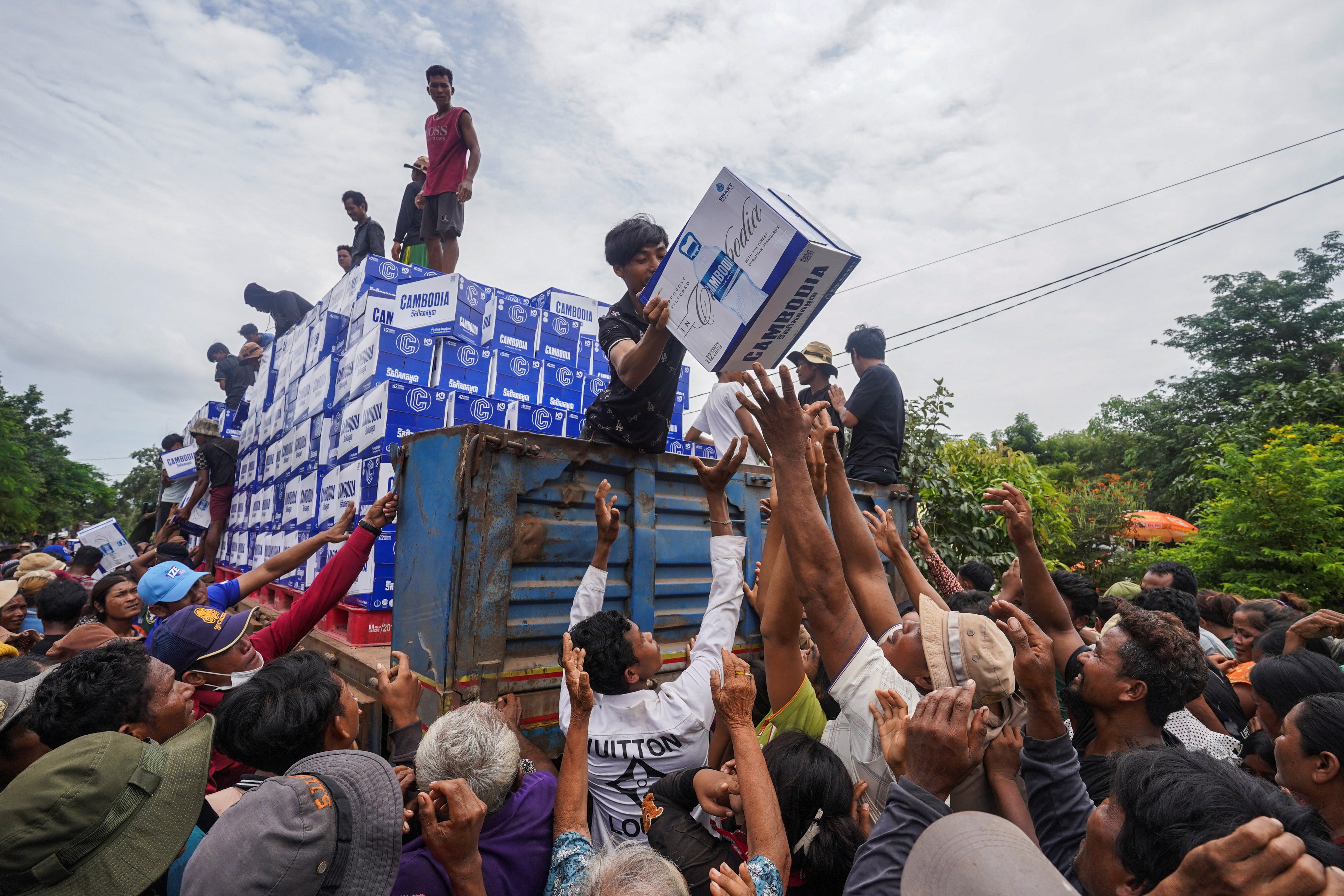 |
Cambodian people evacuate in Oddar Meanchey province. From 24/7 to 28/7, more than 138,000 people were evacuated from the Thai border area, while about 140,000 people were displaced in Cambodia.
On 25/7, Thailand imposed martial law in seven districts of Chanthaburi province and one district in Trat province, both bordering Cambodia.
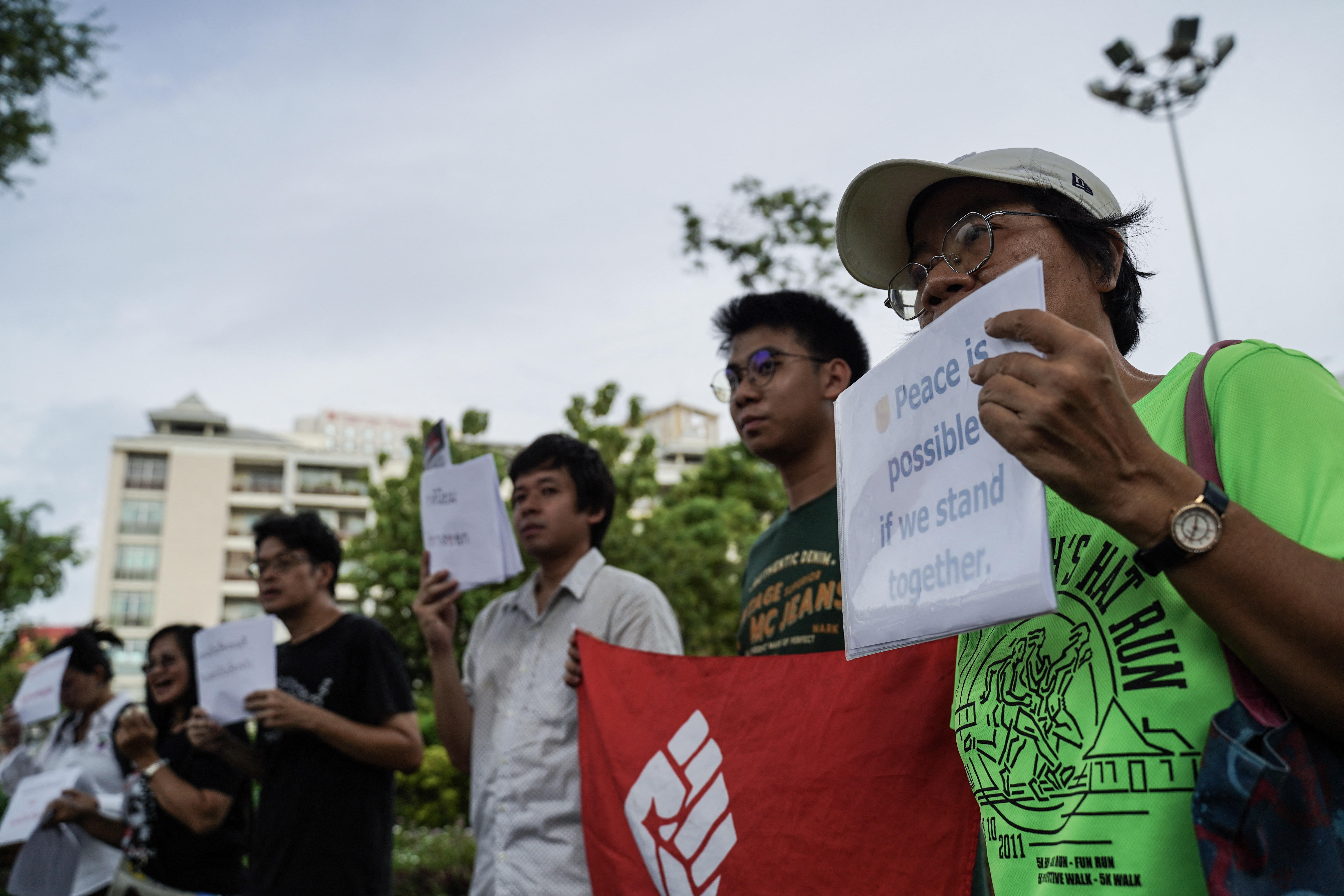 |
People receive drinking water at an evacuation center at Batthkao primary school, Oddar Meanchey province, Cambodia, on 26/7. Fighting continued on the third day, but there were signs that both sides wanted to de-escalate the situation and negotiate a ceasefire. At a UN Security Council meeting, Cambodian Ambassador Chhea Keo said Phnom Penh proposed an immediate and unconditional ceasefire, as well as a peaceful solution to resolve the disagreements.
Thai Foreign Ministry spokesperson Nikorndej Balankura said there were signs that the fighting was beginning to subside. He added that Thailand was ready to negotiate, possibly with the assistance of Malaysia, the current ASEAN chair.
 |
Thai and international activists hold signs protesting the fighting and promoting peace in Bangkok on 26/7. US President Donald Trump spoke by phone with the leaders of Cambodia and Thailand on the same day in an effort to end the conflict. Trump said the US was in trade talks with both Cambodia and Thailand, but would not want to sign any agreements if the two countries continued fighting.
"Thailand, as well as Cambodia, wants an immediate ceasefire and the restoration of peace," Trump said.
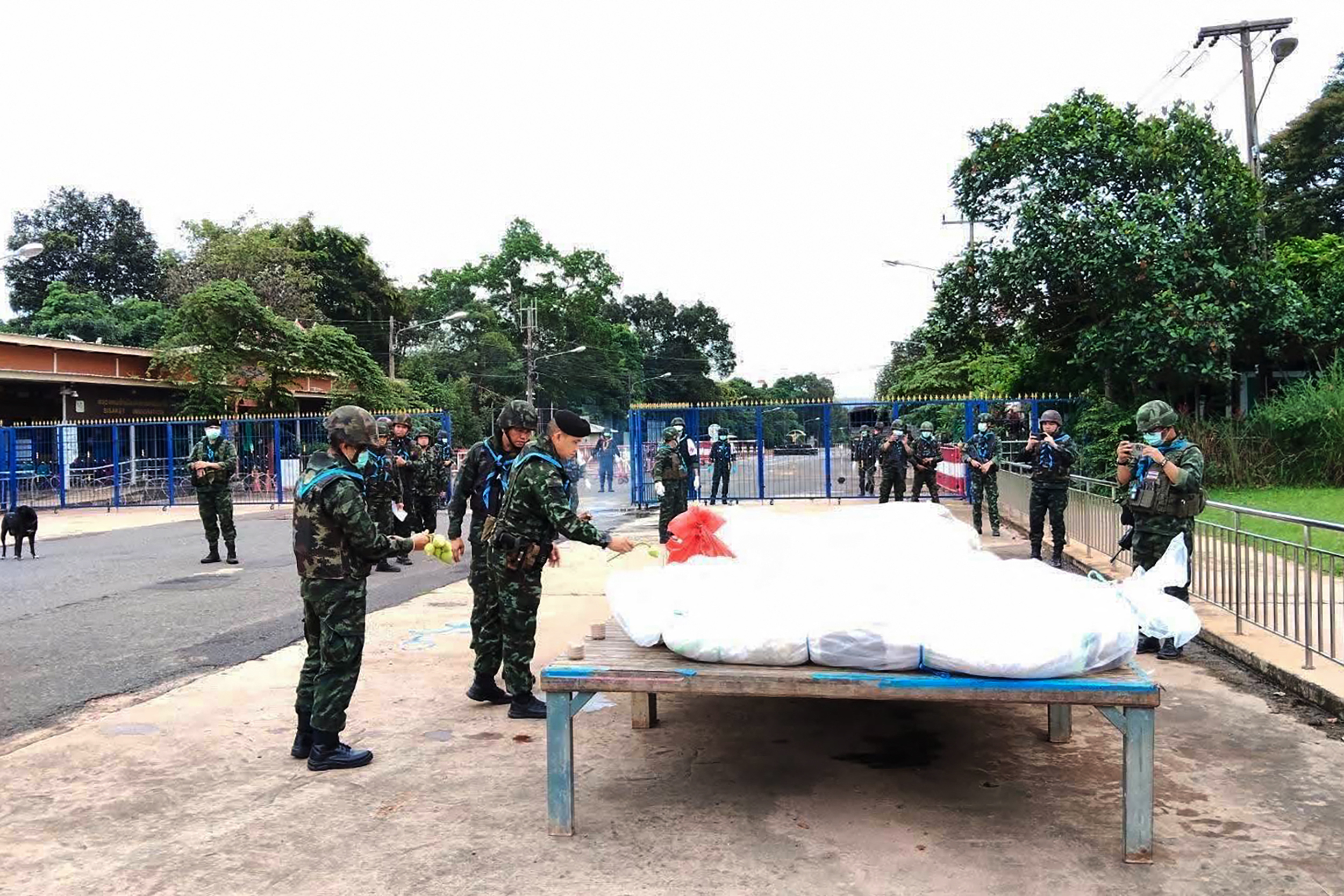 |
A house in Surin province, Thailand, is destroyed by shelling on 27/7. The residents had been evacuated earlier.
After the phone calls with Trump, both Cambodia and Thailand expressed their willingness to reach a ceasefire and resolve the conflict peacefully.
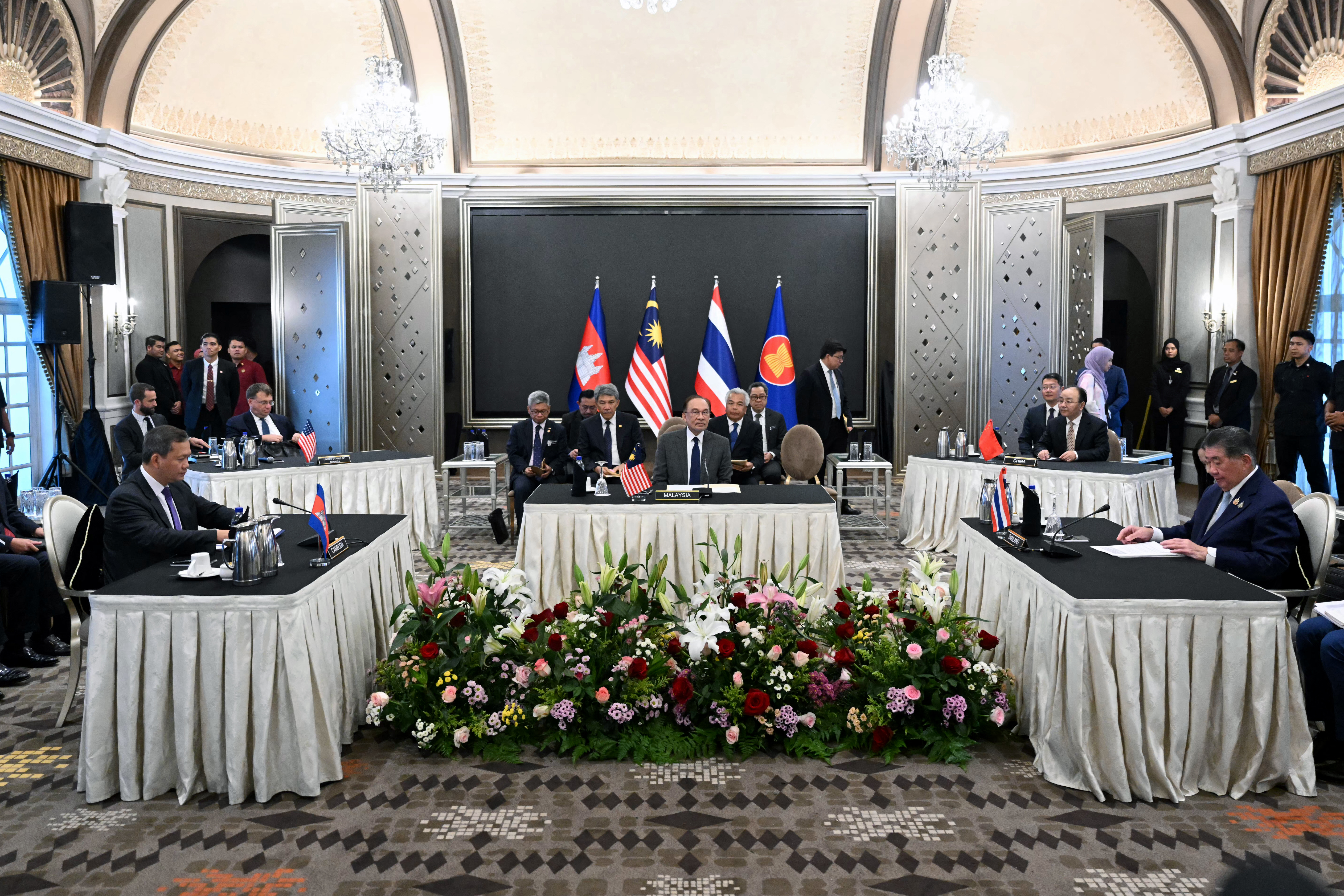 |
The Thai military prepares to hand over the bodies of 12 Cambodian soldiers at the Chong Sa-ngam border crossing, Sisaket province, on 27/7. Prime Minister Hun Manet said Cambodia "agreed to the proposal for an immediate and unconditional ceasefire between the two armed forces." Acting Thai Prime Minister Phumtham also said talks would take place "as soon as possible." However, he warned that Cambodia must show "sincere goodwill" if it wants to restore peace.
On the same day, shelling occurred near two long-disputed ancient temples on the border between northern Cambodia and northeastern Thailand, where most of the fighting has taken place since the conflict erupted.
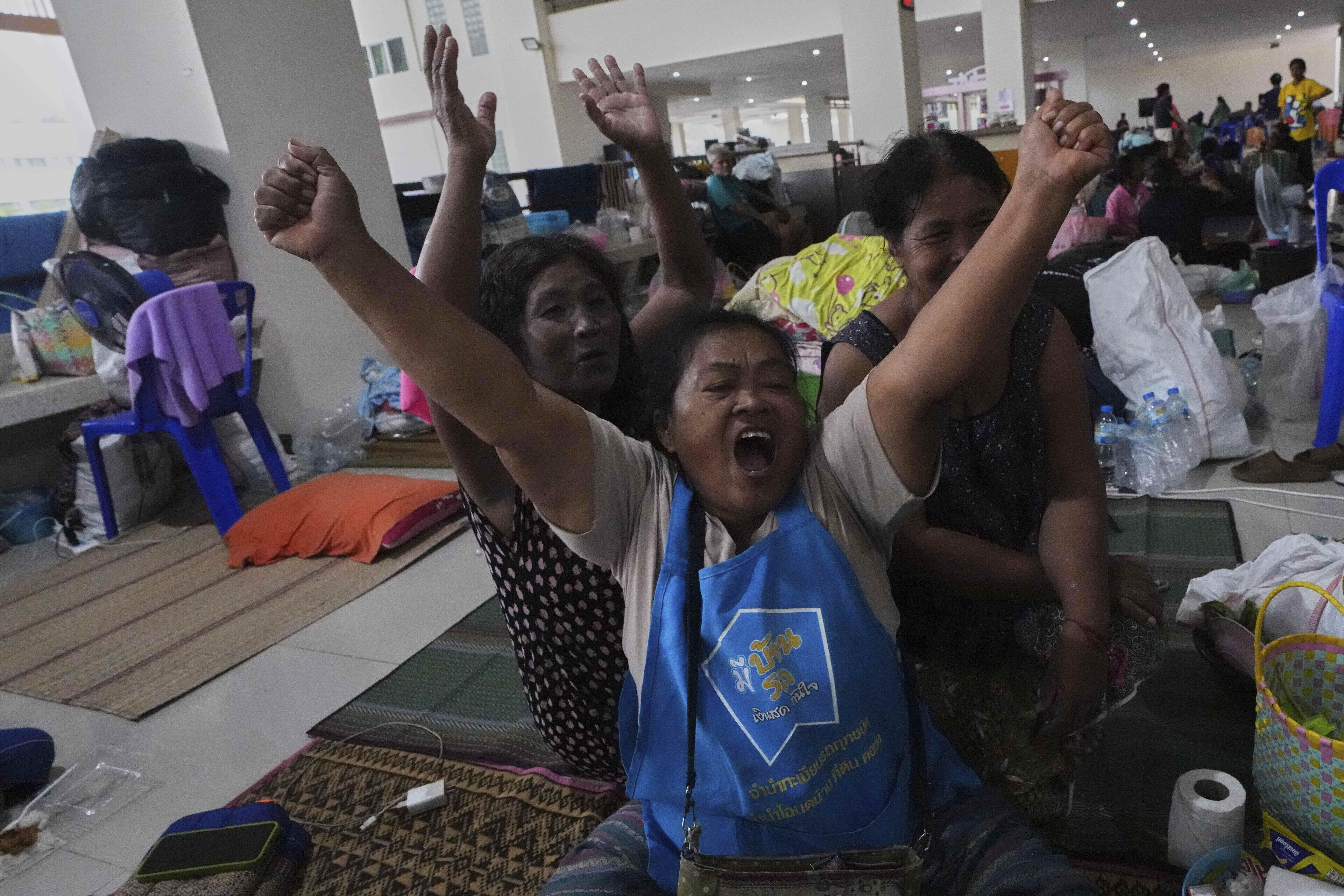 |
On 28/7, Cambodian and Thai delegations held talks in Malaysia, even as fighting continued on the border. The talks took place following a call from President Trump. Pictured are Malaysian Prime Minister Anwar Ibrahim (center), Cambodian Prime Minister Hun Manet (left), and Acting Thai Prime Minister Phumtham Wechayachai.
Prime Minister Anwar later announced that Cambodia and Thailand had reached an immediate and unconditional ceasefire agreement. Both sides also agreed to hold an informal meeting between the commanders of Thailand's Military Region 1 and 2 and the commanders of Cambodia's Military Region 4 and 5.
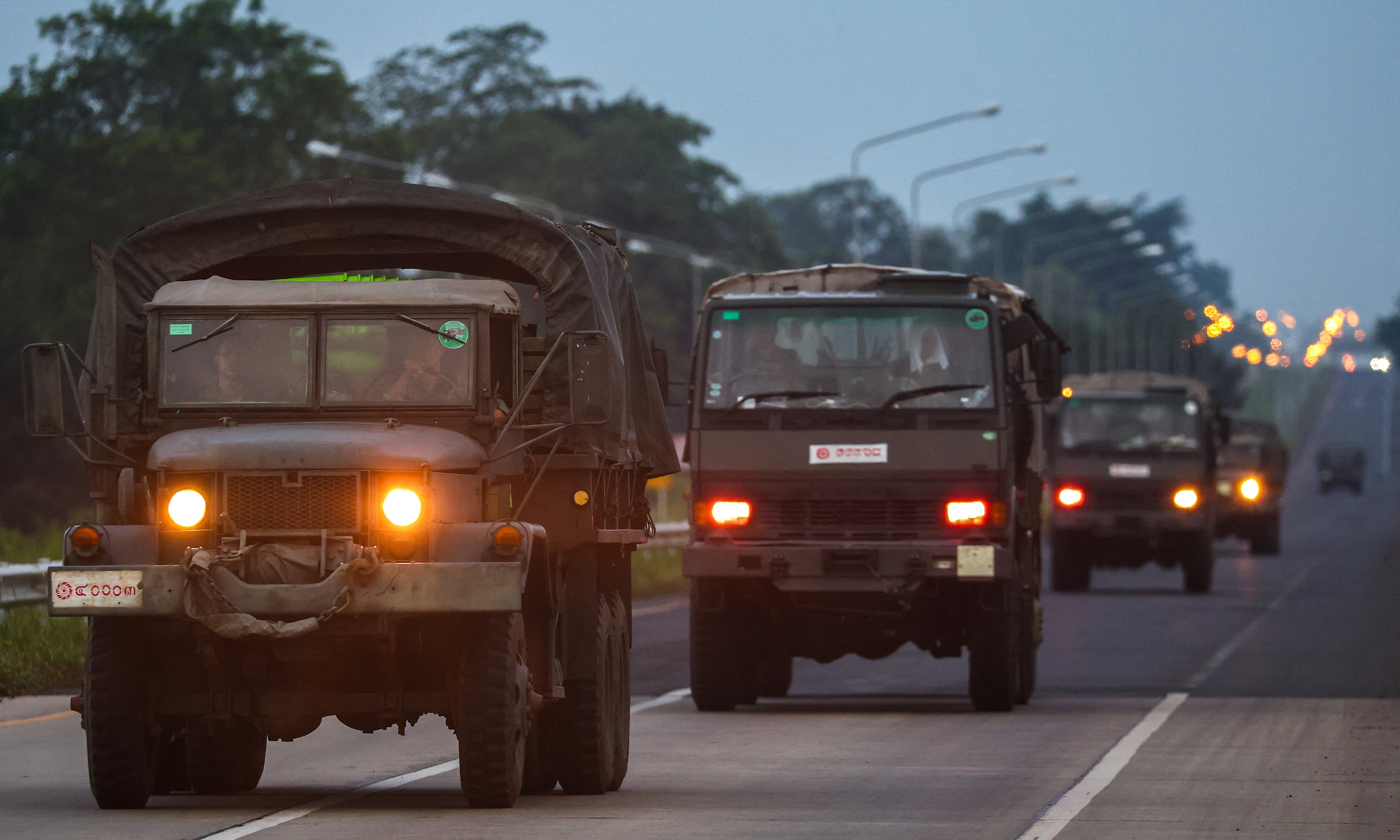 |
Thai people celebrate at an evacuation center in Surin province after hearing about the ceasefire agreement. This was the most serious clash between the two neighbors in over 10 years, killing a total of 38 people, including 25 in Thailand and 13 in Cambodia.
Many countries and organizations around the world, including Vietnam, the US, the European Union, and the United Nations, welcomed the ceasefire between Cambodia and Thailand.
Thailand said fighting continued at several points along the border after the ceasefire took effect, while Cambodia said the situation had calmed down. The acting Thai prime minister described these as "minor clashes" caused by some soldiers not strictly observing discipline, emphasizing that the border situation was quiet by the morning of 29/7.
Huyen Le (AFP, Reuters, AP)












